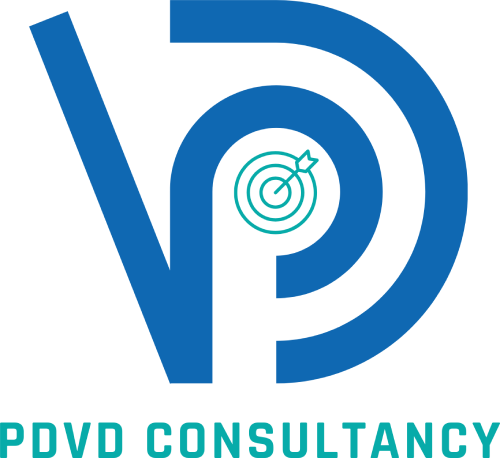From simple over-the-counter (OTC) medicines to complex productions like vaccines, medical devices, and nutritional supplements, a specific quality, efficacy, and safety are more than mandatory. Dropping a ball on any of these while processing for drug manufacturing can leave a significant mark on the well-being and existence of a large mass.
To ensure pitch-perfect quality and efficiency of a drug, it is understandable that many stringent regulations must be followed. Strip these away, and even the most advanced production line collapses into disarray and conjecture. And GDP in pharma is a very important pillar of the safety and regularity of drug production.
What is GDP in pharma?
GDP, in its essence, is the art of capturing information in a manner that leaves no crevice for misinterpretation.
GDP’s full form in pharma is Good Documentation Practices, and they govern the mundane gestures people easily dismiss: scripts that are decipherable, data inscribed in the genuine moment of action, signatures anchored to authentic dates, pages without ghostly voids, and corrections made with integrity rather than hasty smudges.
These gestures may seem quaint in a world of sensors and automated pathways, yet they collectively forge the holy grail of pharmaceutical oversight: traceability.
Good Documentation Practices (GDP) for the stages of drug manufacturing:
Good Documentation Practices (GDP) do not simply drift into the pharmaceutical workflow like an afterthought scribbled at the final checkpoint. And pharmaceutical facility providers like PDVD consultants know that. GDP permeates every crevice of the drug-making odyssey, threading itself through each developmental chapter—from the first flicker of scientific speculation in R&D to the final moment a medicine stands ready to meet the world.
Every stage carries its own cadence, its own labyrinth of procedures, and its own documentary obligations. GDP is the quiet architect holding these moving mechanisms together, forging coherence, traceability, and credibility in a realm where ambiguity can shatter entire production lines.
Research & Development (R&D):
In the Research & Development (R&D) corridor, GDP in the pharmaceutical industry becomes both archivist and interpreter. Those early bench-top experiments, peculiar stability trials, and miniature lab-scale explorations might seem like modest beginnings, yet they sculpt the destiny of the eventual medicine.
Each fragment of data—whether triumphant or disastrously off-course—demands immediate, intelligible, and honest record-keeping. Notes must be legible, timestamps authentic, and observations unembellished.
These chronicles determine whether an idea evolves into a regulated therapeutic agent or collapses under the weight of uncertainty. Without such a meticulously built foundation, all downstream operations tremble.
API manufacturing
As the concept transitions into Active Pharmaceutical Ingredient (API) manufacturing, GDP in the pharmaceutical industry transforms into an uncompromising sentinel. The API is the medicinal heartbeat, and any documentary lapse can throw an entire sequence of batches into a vortex of doubt.
Documentation must reveal the lineage of raw substances, the testing rituals they endured, the atmospheric and procedural conditions governing synthesis, and each control measure woven into the chemical tapestry.
These records aren’t bureaucratic clutter—they provide the forensic clarity needed to trace unwanted impurities, procedural deviations, or lurking hazards long before a patient ever encounters the product.
In the Formulation or Drug Product Manufacturing stage, GDP shifts its vigilance toward mechanical harmony and consistency. Here, the API morphs into its tangible form—tablets, injectables, suspensions, or capsules.
Every action, from granular blending rhythms to environmental safeguards to equipment cleansing rituals, demands real-time inscription. An overlooked timestamp or an undocumented adjustment can fracture batch fidelity or ignite regulatory scrutiny.
Benefits of GDP:
When an anomaly surfaces, GDP ensures every breadcrumb exists, allowing teams to retrace steps, illuminate the true cause, and rectify the matter without wading through chaos.
Another overlooked virtue of GDP is the culture of accountability it silently nurtures. When each task—from sanitizing apparatus to weighing active materials—is documented with scrupulous adherence, a discipline emerges.
Personnel recognise that their annotations echo tangible procedures, not forgotten files resting in dusty archives. This cultivates a shared consciousness of precision throughout production suites, analytical labs, and storage divisions alike. In an industry where a skewed numeral or misplaced decimal can unleash cascading consequences, this ethos becomes indispensable.
The evolution into digital GDP adds an entirely new stratum. Electronic batch records, immutable audit trails, and time-stamped entries streamline compliance while reducing the margin for human slip-ups.
Yet even amid this technological ascendancy, the foundational commandments persist: data must be accurate, attributable, contemporaneous, original, and complete. Technology may bolster diligence, but it cannot substitute it. It also promotes good documentation practices in pharma.
In the end, Good Documentation Practices transcend filing systems and digital logs—they embody a covenant that every product released into the world bears reliability, uniformity, and ethical rigor.
For manufacturers and facility partners alike, steadfast GDP is not just another regulatory checkbox; it is the spine of credibility within pharmaceuticals. When human lives rest on the precision of what is produced, compromising these principles becomes unthinkable.
PDVD consultants always come up with solutions for pharma entities that help them comply with GDP regulations and support a safe way of manufacturing. Contact us at +9184691 49494.
FAQs
GDP helps pharma companies maintain a standard, quality, and ensure safety for the customers/patients.
It provides organized, verifiable, and dependable records that demonstrate proper procedures were followed.
Firstly, the drug quality and safety level of users fall under uncertainty, which is an avoidable situation. Additionally, Non-compliance with GDP can lead to batch rejection and regulatory penalties.
Definitely. GDP plays a great role in drug quality.
Documents like Experiment logs, batch records, testing reports, cleaning logs, and material traceability fall under GDP.

